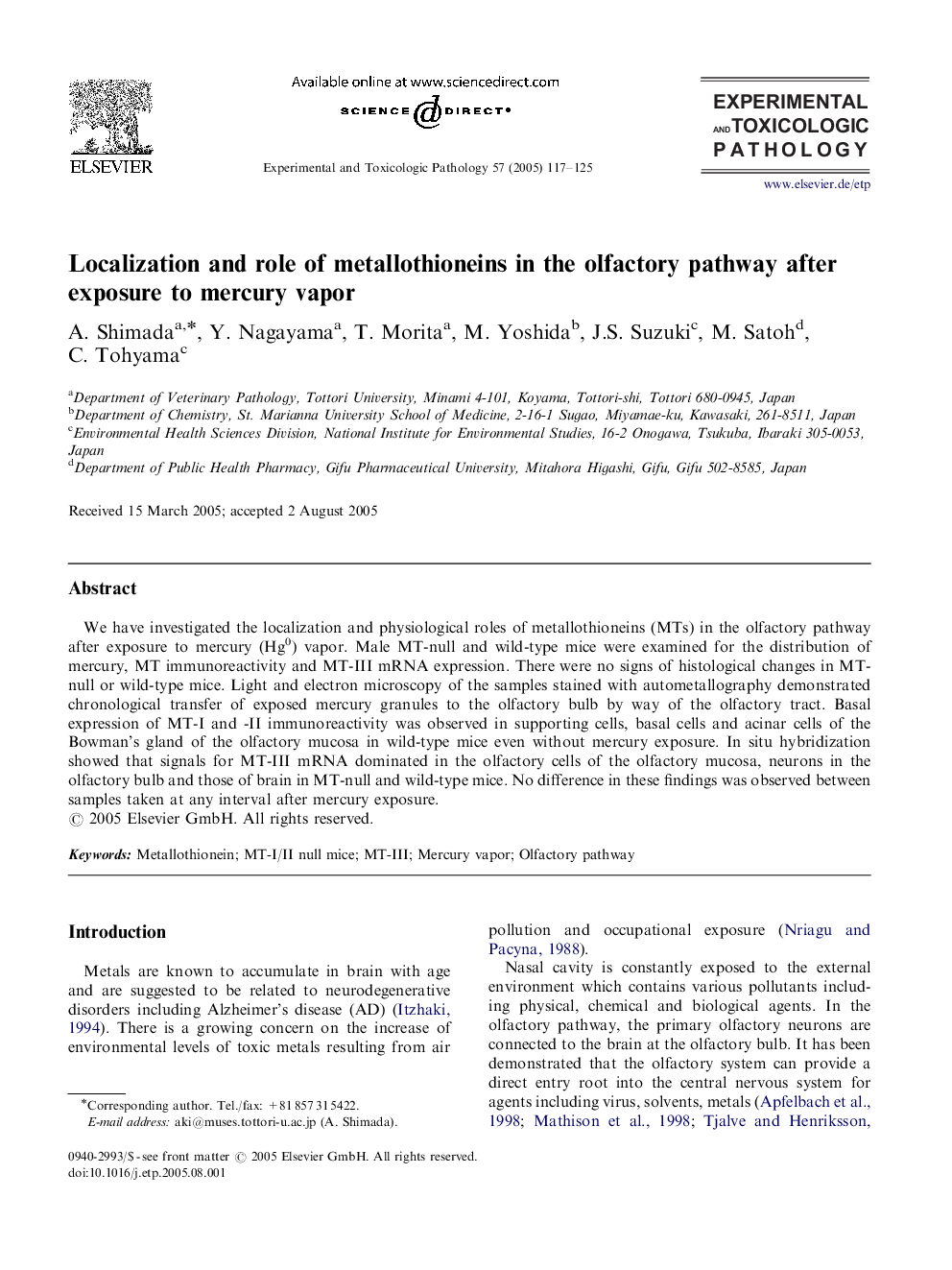| Article ID | Journal | Published Year | Pages | File Type |
|---|---|---|---|---|
| 9000341 | Experimental and Toxicologic Pathology | 2005 | 9 Pages |
Abstract
We have investigated the localization and physiological roles of metallothioneins (MTs) in the olfactory pathway after exposure to mercury (Hg0) vapor. Male MT-null and wild-type mice were examined for the distribution of mercury, MT immunoreactivity and MT-III mRNA expression. There were no signs of histological changes in MT-null or wild-type mice. Light and electron microscopy of the samples stained with autometallography demonstrated chronological transfer of exposed mercury granules to the olfactory bulb by way of the olfactory tract. Basal expression of MT-I and -II immunoreactivity was observed in supporting cells, basal cells and acinar cells of the Bowman's gland of the olfactory mucosa in wild-type mice even without mercury exposure. In situ hybridization showed that signals for MT-III mRNA dominated in the olfactory cells of the olfactory mucosa, neurons in the olfactory bulb and those of brain in MT-null and wild-type mice. No difference in these findings was observed between samples taken at any interval after mercury exposure.
Related Topics
Life Sciences
Agricultural and Biological Sciences
Animal Science and Zoology
Authors
A. Shimada, Y. Nagayama, T. Morita, M. Yoshida, J.S. Suzuki, M. Satoh, C. Tohyama,
